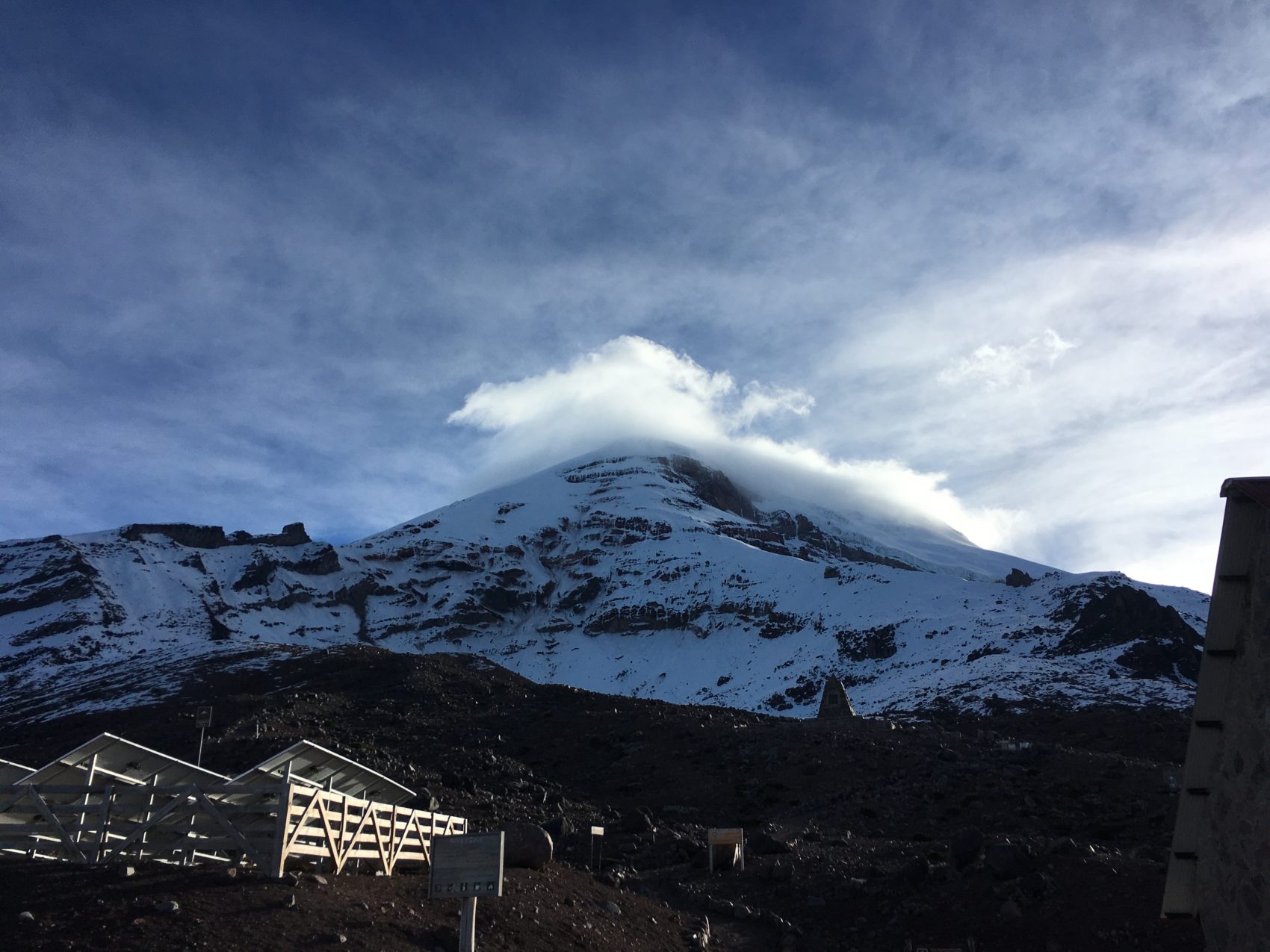
When I arrived at the high-altitude Ecuadorian city of Riobamba, I was convinced I was dying of dysentery. Really, responsible was just a bag of bad plums I had eaten on the 7-hour bus ride with no other food options at hand. A lovely way to start the expedition to the top of Mt. Chimborazo – Earth’s closest point to the sun.
You see, Mt. Everest is the tallest mountain on the planet, but due to the earth’s equatorial bulge, it’s not actually the furthest point from sea level. Mt. Chimborazo holds that title.
The dormant volcano seated on the outskirts of Riobamba, Ecuador is an intimidating-looking behemoth. It’s all smooth, green rolling hills around the region and then BOOM! A giant volcano pops its snowcapped head out of seemingly nowhere. With a summit of 20,564 feet, you can’t really take your eye off of it when you’re walking around in the sleepy streets of Riobamba.

When I walked into the headquarters of Ecuador Eco Adventures – the expedition agency with whom I had booked to summit this beast of a mountain – the lady working at the desk was pale and anxious. She was not thrilled to see me, and even less thrilled to break the bad news to me.
“I’m sorry but we are going to have to post-pone the trek a few days. There has.. um. There’s been an accident on the mountain,” she said.
She told me that earlier this very morning that a client had died in a horrific accident on the volcano. She was visibly shaken. But she was not as shaken as her husband, Wlady, the founder and CEO of Ecuador Eco-adventures and one of the guides there, that day of the accident.
When Wlady arrived at the headquarters the next afternoon, he came in slowly, dragging his feet. He had tired, sorrowful brown eyes, like that of a man who had witnessed something gruesome and hadn’t slept at all the night before. He apologized for the inconvenience of having delayed our expedition, telling me that he had spent the last 48 hours dealing with local police and getting the deceased client’s affairs in order with his next of kin and so forth. With a heavy heart, he described what had happened.
That morning that I had arrived, he, the client, and the other guides had summited Chimborazo successfully by sunrise, without any major issues. It was all smiles and high-fives at the top, he told me. But then when they were descending from the summit, the client had suffered a fatal heart attack. There was nothing they could do and he died right there on the snowy slope of the volcano. It’s still unknown the exact cause as to why the man had suffered the heart attack and died, but it is known that he was in his late 60’s and human error was likely not the cause. Perhaps by a sudden twist of fate his heart had just given out on him. Who knows?
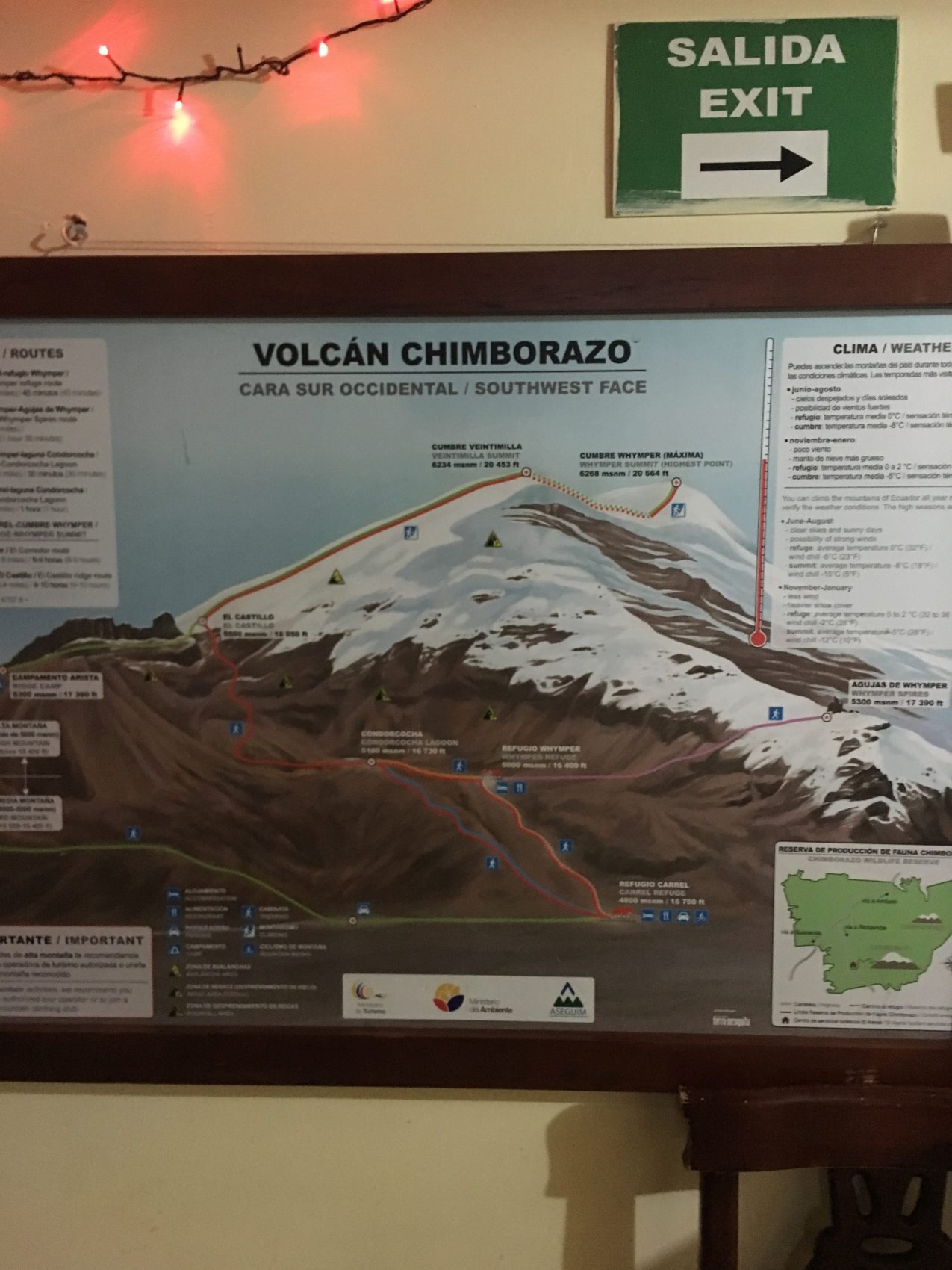
Wlady told me that this was the first death on his watch since he began taking people up Chimborazo for money over a decade ago. It wasn’t exactly a confidence-inspiring beginning to our expedition. The next day his wife took me up to the ‘refugio’ where I would spend the next few days acclimatizing to the high altitude and getting over my stomach illness.
The refugio was essentially a small, two-story stone shack located on what felt to be the utter ends of the earth. There were no people here; no vegetation; not even sun. Just harsh wind, rain, and rocky mountainside. Here, I spent a couple of days alone working on my cabin fever and regaining my strength from the bag of bad plums I ate on the bus, all the while trying to keep warm. It was freezing in that humble little mountain shack. The only company I had was a homely indigenous lady who cooked me tasty local dishes and carried with her a newborn child in a pouch wherever she went, an eager teenage boy who wanted to know everything there is to know about American life, and a collection of National Geographic magazines from the late 1990s. A German couple joined me for the last day in the refugio, and we spent the whole day watching the wind whip the rain around and playing simple cards games that got old very fast.
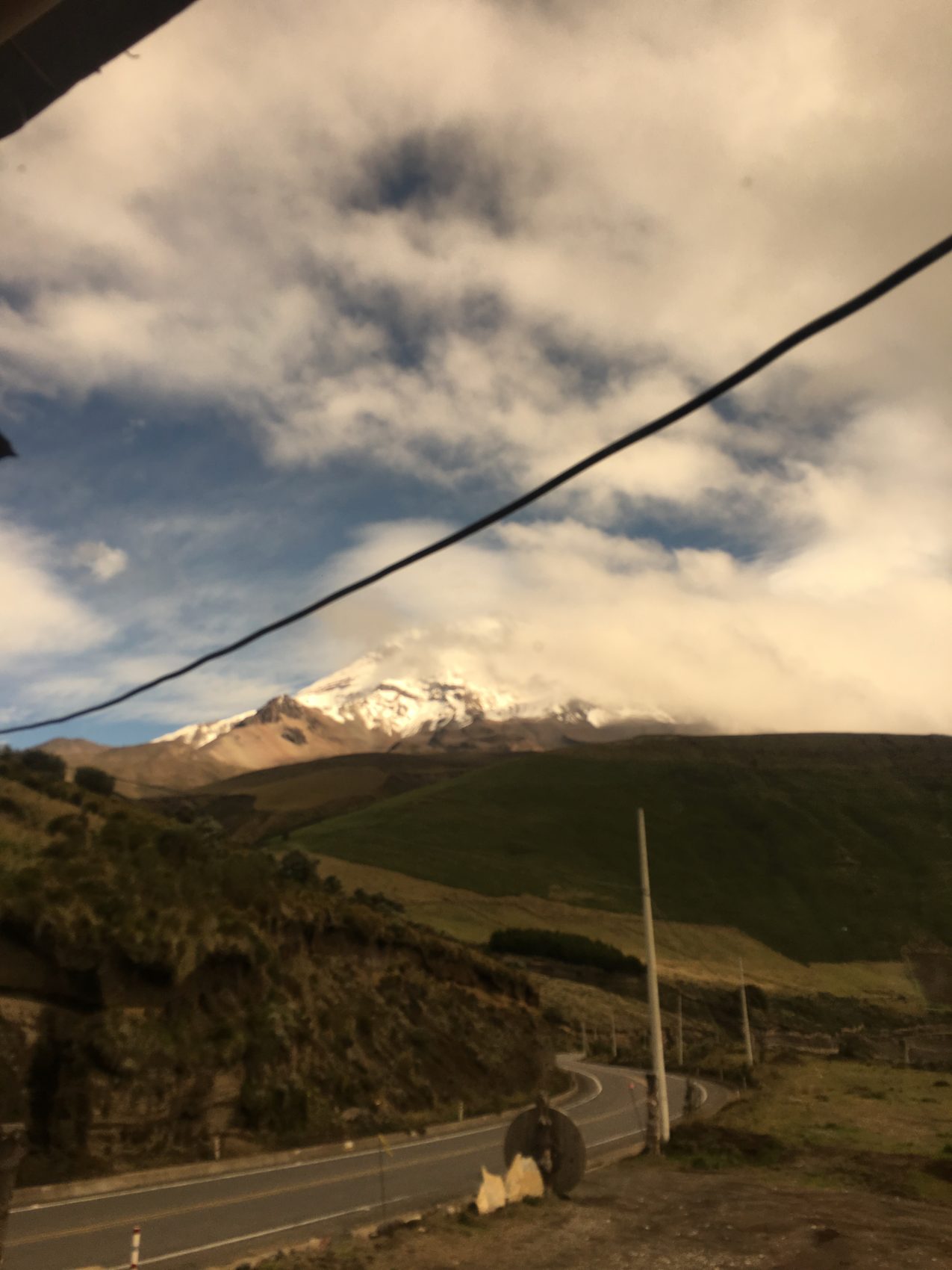
The next morning the German couple wished me luck on my adventure as I loaded up the truck with my guide and another climber, both of whom I had just met. We headed towards the final refugio situated at 15,500 feet — the last stop at the end of the road up from Riobamba where we would start our push for the summit. When we got there we were greeted by a herd of wild vicunas. They were a friendly contrast to the gray, alien landscape of this place.
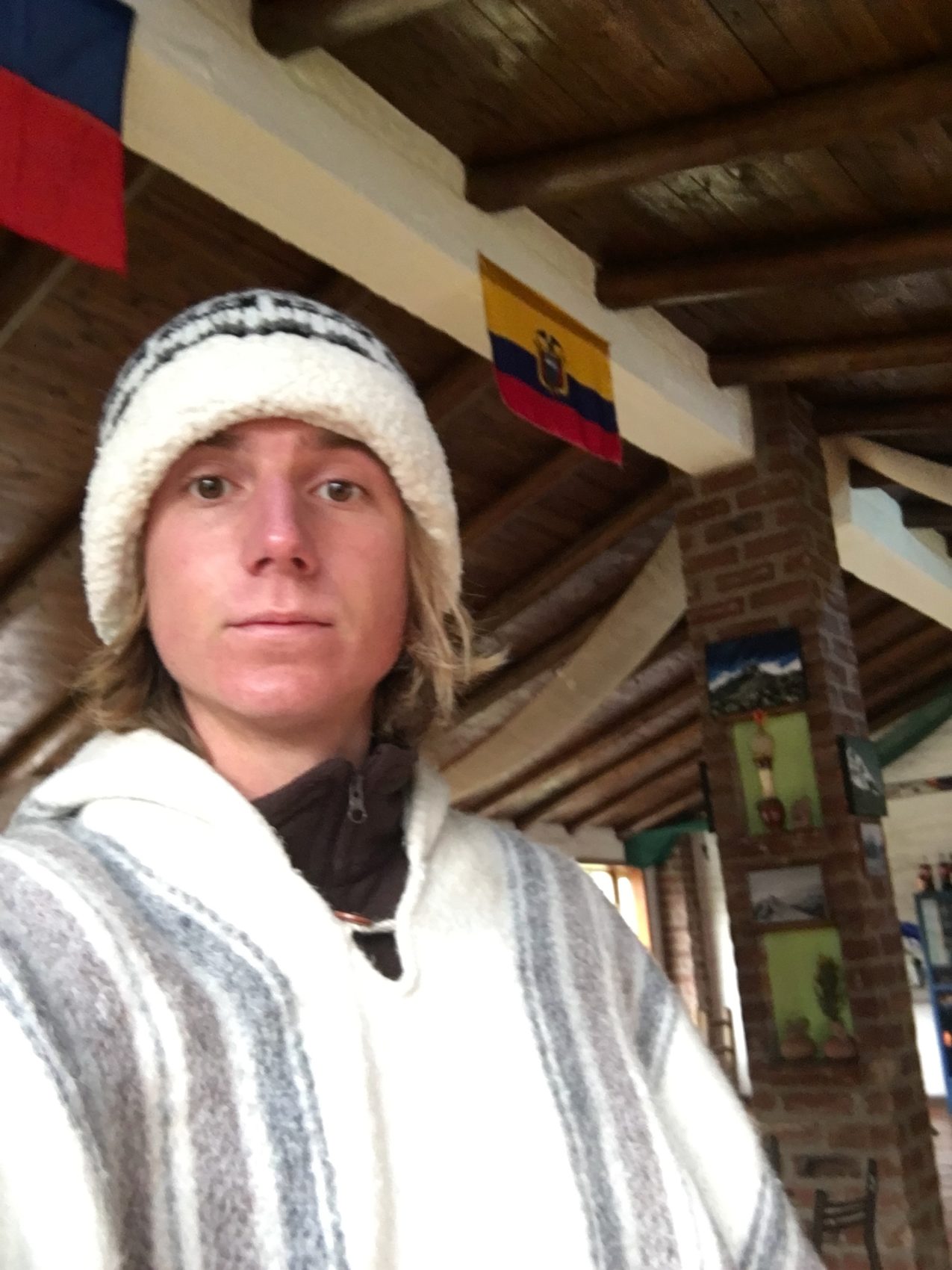
This refugio was much larger than the previous, and it reminded me of a big ski lodge, like one you’d see halfway up a popular ski resort like Breckenridge or something, except for the fact that it was almost completely absent of people. At 15,000+ feet this place was at the end of the line.
When I got here my heart started beating fast. I spoke with the other traveler booked for the trek, and she said she felt a similar effect. The elevation was most likely the cause, but it also seemed like the immensely powerful energy of this place was a contributing factor. We were closer to the sun – the life force of this planet and gravitational workhorse for our solar system – than any other point on the earth, and I reveled in that.
We got a run-down from the guides as to how the climb to the summit would go, and we were told that at if any moment the guides felt it was unsafe to continue, we would have to turn back, no questions asked. We were given our gear for the climb — crampons, harness, ice-ace, snow boots, helmet, ski pants – and were told to get what little sleep we could before pushing for the summit at midnight. We would hope to summit by sunrise.
I didn’t get a peep of sleep that night as my mind was filled with gruesome images of that climber collapsing on the same route we’d be following up. But above anything else, I had wanted to do this thing. I wanted to summit the closest point on the earth to the sun and see what it looked like from up there; to harness its energy. Midnight rolled around with my guide’s alarm clock on his phone going off. We got out of our bunk beds, suited up in silence, double-checked that we had all our gear in order and were off into the night.
It was eerily calm and quiet when we left the safety of the refugio. For being over 15,000 feet up in the sky on the side of a sleeping giant with no protection from the wind whatsoever, there wasn’t any. There was hardly even a breeze. The only thing producing sound was our own two feet. It was peaceful, and the stars visible up from here were quite the sight. Looking up to the night sky, you could see what felt to be the whole celestial river that is the Milky Way, and then some. The beauty of this place was profound.
We hiked on loose rock until we hit the snowline and then we put our crampons on and roped up to each other. The ascent was actually mellower than I had thought, or at least it was compared to how it had been described by Wladly and the other guides in days prior. It was no harder than a lot of the stuff I bootpack during ski season. We probably trekked for a solid two hours under starlight when the guide leading the pack suddenly stopped and shined his headlamp back towards us, calling for the other guides to come up to his position. Something was wrong.
A little ways up the hill, the three guides convened in a casual huddle, like referees discussing the previous play of football game. Hand gestures and confirming nods went back and forth for a few minutes until it appeared as if they had reached a solemn agreement of some sort. They then walked back down to where the other climber and I had been anxiously waiting in the snow.
“You see this?”
One of the guides pointed to a series of large rollerballs just off to the side of the bootpack. I immediately knew what this meant, and what he was going to say next.
“This means we have to go back,” he said reluctantly in his thick, Ecuadorian accent.
The same guide then pointed to a large stone boulder only feet away from where we were standing. He told us that this boulder was not here a few days ago when they were descending the summit with the previous, ill-fated party and that it had tumbled down the mountainside sometime between then and now. The boulder wasn’t terribly large, but it was big enough. Big enough to kill someone, and big enough to prove that the current conditions were unfit for us to continue onwards.
This, on top of the new rollerballs, signaled that the snowpack had become recently unstable and that the probability of an avalanche was high. I knew what the guide was saying was true due to my experience skiing in the backcountry. Disappointed yet content that we had made the right call, we took one final look at the summit which was shrouded in cloud cover and turned back.
On the way back down, the guides spoke reassuring words that this is just the nature of the beast when climbing Chimborazo, especially in this day and age when the climate is proving to be more unpredictable by the day. Too many lives had already been lost that week for us to push onwards, and once again I say that I am joyed that we made the right call. As disappointed as we may have been, we were all on the same page about this. Our decision to turn back would be reinforced as correct on the way down when a series of strangely shaped stones off to the side of the trail caught my eye…
Something about them seemed a little too out of place on this volcano, a little too unnatural. When we stopped and shined our headlamps on them, the engravings on the stones gave them away instantly. They were tombstones. They were tombstones for all the climbers who had died here over the years. And there were dozens of them.
On them were engraved the names, nationalities, and life-spans of those who were not fortunate enough to make it back home to their families and tell them about the epic quest they had just pursued. A piece of fresh notebook paper showed where the next tombstone would be placed. On it was written some parting words by the deceased climber’s buddy from the previous expedition.
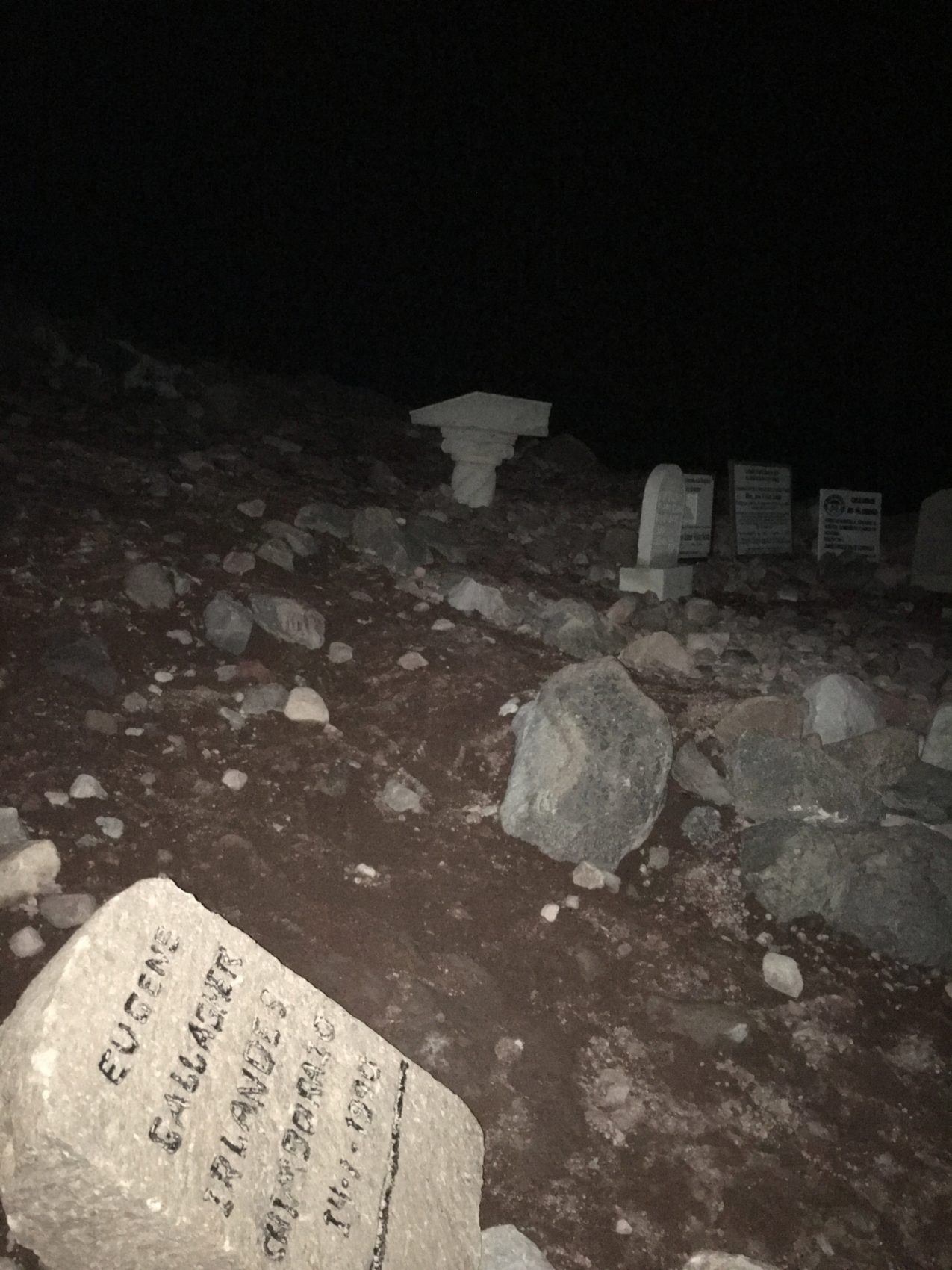

We stood there for a moment and just looked at the stones, my guide and I not saying a word to each other. A silent, involuntary show of respect, I suppose. The tombstones were on the crest of a ridge, juxtaposed with the brilliant backdrop of the starry night’s sky behind them. I turned my headlamp off for a few long seconds and just soaked up what was in front of my eyes. An artist couldn’t paint this shit.
After what felt like a moment absent of time, my guide spoke.
“Come on. Time to go.”
After a final glance, I took a deep breath and recontinued the descent. Despite not having made it to the summit, I was able to leave with something much more valuable than any sense of victory gained from just making it to the top. I left with the only thing that this sleeping giant they call Chimborazo had offered me. Appreciation.
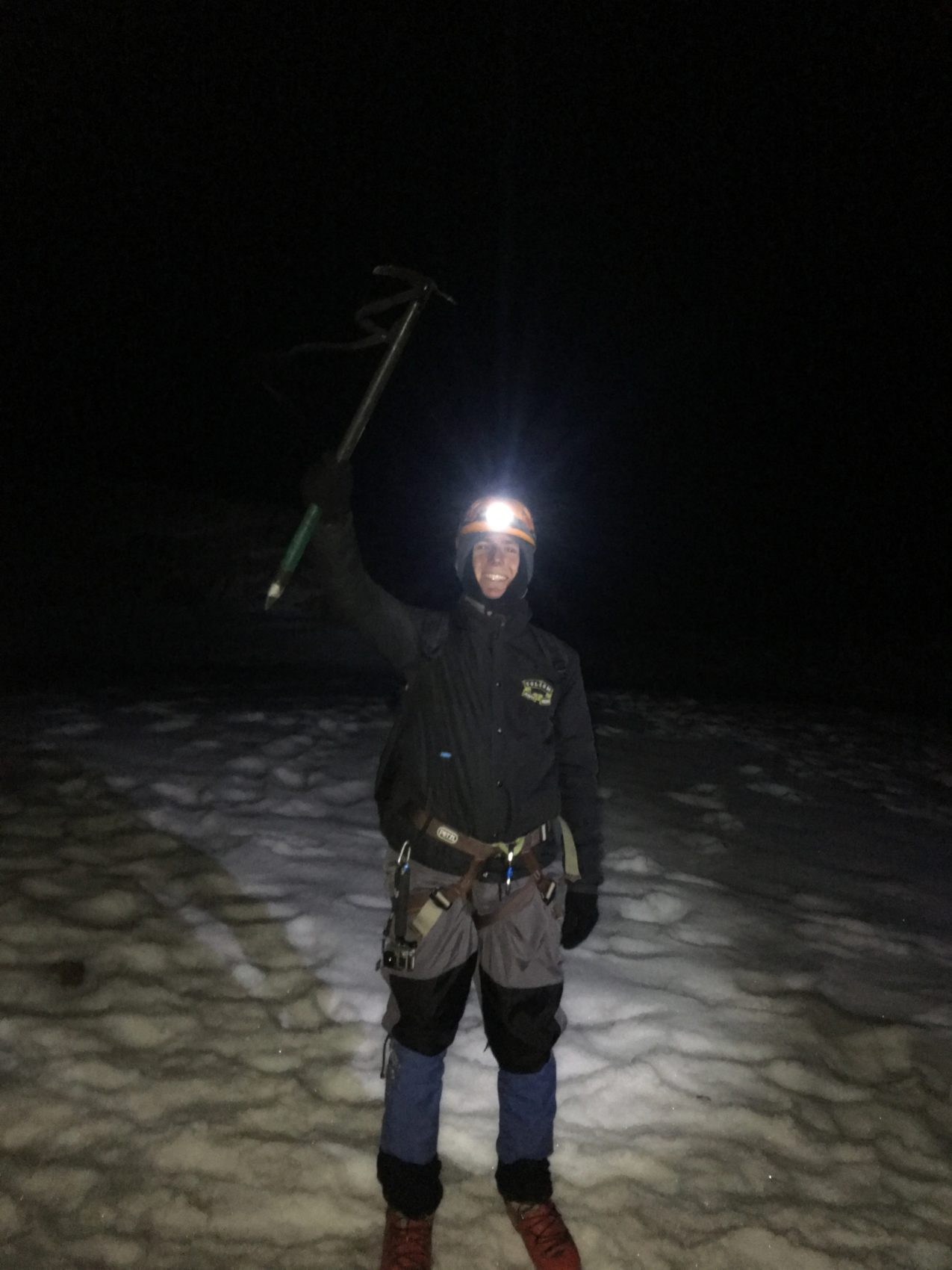
I think sea level has the same equatorial bulge that the earth does. When the author says that the furthest point from sea level is in Ecuador, I think he should have said that the furthest point from the center of the earth–, which could also be the closest point to the sun– is in Ecuador.